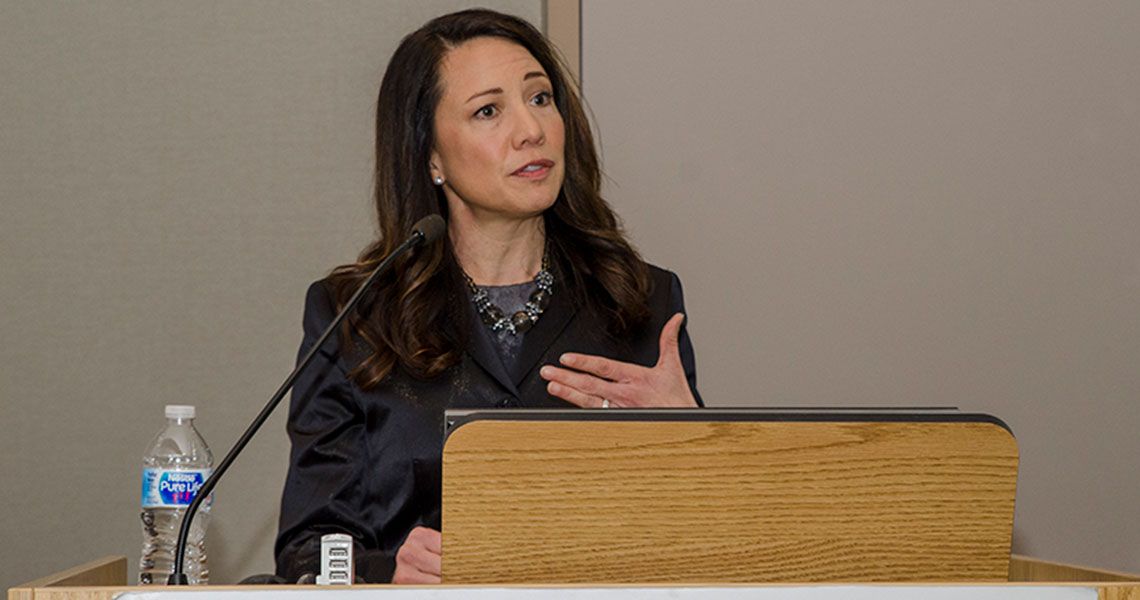Suicide. We live with it, we tolerate it, we see it, or we don’t see it — until suddenly we do, Christine Moutier, MD, chief medical officer for the American Foundation for Suicide Prevention (AFSP), told the audience at the annual Seymour Perlin, MD, Grand Rounds. However, she noted, as a society, we are getting better about addressing it.
“For 24 years, the Seymour Perlin, MD, Grand Rounds has invited major figures in suicide research, treatment, and mental health policy to speak and give impetus to the work that we do in suicide prevention,” said James Griffith, MD, chair of the Department of Psychiatry and Behavioral Sciences and Leon M. Yochelson Professor of Psychiatry at the George Washington University School of Medicine and Health Sciences.
The lecture, titled “Physician Mental Health: Preventing Suicide and Building Resilience,” explored the stigma attached to mental health in the medical profession and questioned why physicians report higher suicide rates than other professions.
“This is a real time of transition in the medical profession and in academic medical education,” said Moutier, “in terms of really being faced with needing to deal with the issues of trainee and physician well-being as it relates to ourselves and our patient care as well.”
“You are hard pressed to find a medical organization that is not doing something in this regard,” she continued. “It really seems like we are reaching a tipping point.”
Moutier and AFSP launched a suicide prevention campaign, Project 2025, which aims to reduce the annual rate of suicide to 20 percent by 2025.
Her experience with the subject of suicide began in the second year of her residency at the University of California San Diego (UCSD), when a medical student killed himself at the beginning of his fourth year. “Over the next decade or so, there were more suicides, mostly faculty physicians in all different specialties,” she said.
There are various risk factors for physician suicide, and a big one is depression, she explained. Depression can be brought on by neuroticism, stressful life experiences, and work factors such as long hours and medical errors.
“What science very clearly tells us,” Moutier explained, “is that when it comes to people who die by suicide, there is not one cause. There can be precipitating events that pile up, and that one event is the last straw.”
The habits of practicing and promoting well-being and resilience need to be cultivated across the continuum, she said. “We can think of the continuum as a cross hospital environment and the different settings that students or trainees rotate through.”
Moutier also discussed the portrayal of suicide in the media. Recently, the AP Stylebook banned the use of the phrase “committed suicide,” because it implies that the person perpetrated a crime. In its place, the AFSP recommends saying an individual “died by suicide” or simply that the person “killed himself or herself.”
When it comes to stigma, Moutier added, “our objective ways of thinking about seeking help are harder to access in the moment of distress. We have to be supportive colleagues and have to create ways of making support and treatment available so that the burden is not on that individual in their darkest moment.”



